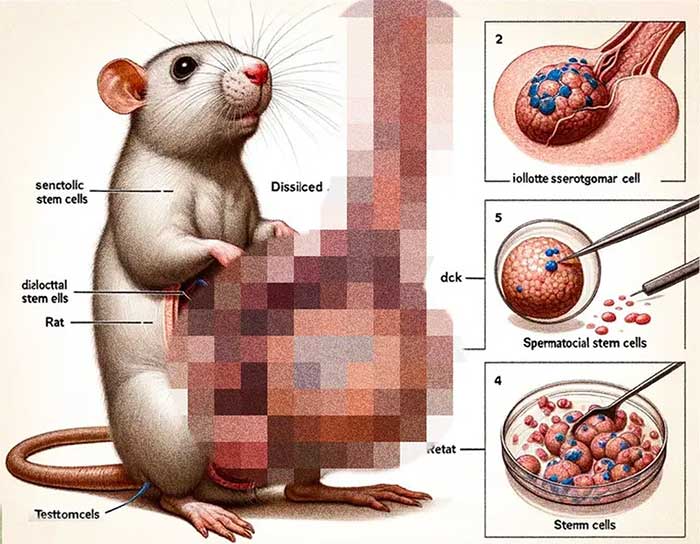Three Chinese scientists were accused of using AI images in research projects
A report by three Chinese scientists has been removed from a prestigious scientific journal for using images created by artificial intelligence software.
The article, titled "Cellular functions of spermatogenic stem cells related to the JAK/STAT signaling pathway" , was published in the prestigious scientific journal of the publisher Frontiers on February 13. .
JAK/STAT is an important signaling pathway in cells, participating in processes such as immunity, cell division, cell necrosis, tumor formation.
The article caused a stir in the scientific community and on social networks, not because of the content of the report, but because of the illustrations used in the article.
The authors of the study - three Chinese scientists including Guo Xinyu, Liang Dong and Hao Dingjun - are said to have used Midjourney, an artificial intelligence software that allows creating images from descriptive text, to create illustrations for your scientific research.

The illustration in the scientific report is suspected to have been created by artificial intelligence software (Photo: Frontiers).
For example, in this scientific report there is a strange illustration of a rat's penis, with the size of the penis enlarged much larger than the rat's body. The image also appears to have basic spelling errors and even "slang words" referring to the penis, which many people realize are errors of the AI software.
When images of the report spread on social networks, scientists pointed out errors in the illustrations and questioned the review process of the article.
Previously, Chinese authors submitted a report on their research to the prestigious scientific journal of the publisher Frontiers. This report was reviewed and evaluated by 2 Indian scientists and 1 American scientist before being published.
Jingbo Dai, an American scientist working at Northwestern University, one of the participants in the review of the report, said he had noticed unusual things in the report's illustrations, but his responsibility was not limited. His job was to "consider scientific aspects" , so he ignored the content of illustrations and only focused on the content of the report.
In addition to the illustrations, many people suspect that the information in this scientific report was also created by artificial intelligence tools, raising doubts about the accuracy of the research.
2 days after the report of three Chinese scientists was published in a scientific journal and received many comments about errors in the illustrations, Frontiers withdrew the article from its website and moved forward. conduct investigation.
In its investigation, Frontiers discovered that one of the scientists reviewing the report raised concerns about the illustrations and asked the author to make changes, but this was ignored.
Recently, Frontiers decided to delete the report of three Chinese scientists and issue an apology to the academic community.
"We acted quickly on the scientific community's feedback on the AI-generated figures in the article. We sincerely apologize to the scientific community for this error and thank readers for their prompt response. promptly notify us about this issue ," a representative of publisher Frontiers shared.
Frontiers is an open access scholarly publisher, highly regarded for its research in science, technology and medicine. Frontiers journals are reviewed and reviewed by more than 100,000 leading researchers, covering more than 600 disciplines.
Currently, Frontiers is one of the largest and most highly cited scientific publishers in the world. Frontiers' research articles are freely accessible and have received more than 500 million views and downloads, along with more than 1 million citations.
- The Canadian government is accused of
- Mr. Hwang Woo-suk was formally accused of embezzlement and deception
- Apple first published research on artificial intelligence
- HP was accused of spying on Dell
- 33 Chinese projects are changing the face of the world (Part 1)
- Chinese research ship swept the American face
- Controversy after the
- Renovating the management mechanism of programs, projects, science projects and state-level branches
- NASA is accused of hiding UFO images
- Scientists do research with cone gene sequences
- Festival of 'Youth Creation' nationwide
- Chinese research was ostracized because of the creation of the Genesis Theory
 The most famous scientific failures in history
The most famous scientific failures in history Mysterious genius mechanic and the machine froze time
Mysterious genius mechanic and the machine froze time The son carries the 'bad gene' of genius Albert Einstein
The son carries the 'bad gene' of genius Albert Einstein Isaac Newton
Isaac Newton